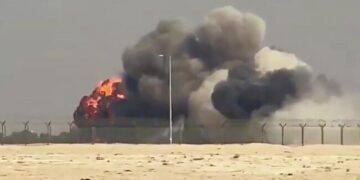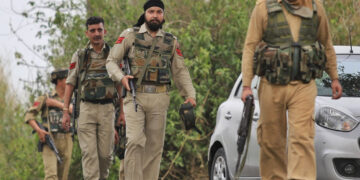
Ukraine Drone Attack: In a bold military maneuver that may redefine drone warfare, Ukraine launched a massive drone attack on Russian military airbases, deploying 117 drones across multiple Russian regions in a covert operation named “Spider’s Web.” President Volodymyr Zelensky praised the strike, calling it one of Ukraine’s most successful military actions since the start of the war in 2022.
The operation, which struck deep into Russian territory, was executed by an equal number of drone operators and targeted key strategic sites. According to Zelensky, the attack resulted in major damage to Russia’s strategic aviation, particularly the cruise missile carriers stationed at various air bases.
A Year-and-a-Half in the Making
“This operation was meticulously planned over the last 18 months,” Zelensky said in a social media post. “It involved multiple teams operating across different time zones in Russia. The coordination, timing, and precision were exceptional.”

The Ukrainian President confirmed that all personnel involved in the operation were safely withdrawn from Russian territory before the drones were deployed. He described the mission as “absolutely unique” and said the attack dealt a devastating blow to Russia’s long-range strike capability.
“It’s genuinely satisfying when something I authorized a year and six months ago comes to fruition and deprives Russia of over 40 units of strategic aviation,” Zelensky noted.
Intelligence and Timing Behind the Ukraine Drone Attack
Zelensky stated that Ukraine had received fresh intelligence inputs shortly before the Ukraine drone attack, suggesting that Russia was preparing another round of missile and drone strikes on Ukrainian targets. This information helped shape the timing and strategic targets of the “Spider’s Web” operation.
He also urged Ukrainian citizens to continue taking air raid alerts seriously, especially in light of recent escalations.
“Last night, there were nearly 500 Russian drones launched. Each week, they increase the number of units used per strike. Kalibr missiles have also been prepared on naval platforms. We must remain vigilant,” he added.
Ceasefire Still on the Table
Despite the recent escalation marked by the significant Ukraine drone attack, President Zelensky emphasized that Ukraine remains committed to pursuing peace. He highlighted that since March 11, a U.S.-proposed unconditional ceasefire has been on the table, but it was Russia that rejected the offer, choosing instead to continue the conflict.
“Not for a single second did we want this war,” Zelensky said. “Pressure is needed—through sanctions, military force, and diplomacy. Only then can we bring Russia back to reality.”
Targets Deep Within Russia
According to reports from AFP and local sources, Ukraine drone strike targeted Russian airbases located in Belaya (eastern Siberia), Olenya (near Finland in the Arctic), Ivanovo, and Dyagilevo (east of Moscow). These bases house some of Russia’s most advanced bombers and missile systems.
The timing of the operation is also significant—it comes just one day before peace talks between Moscow and Kyiv are scheduled to begin in Istanbul.
Additional Chaos Inside Russia
Adding to Russia’s challenges amid the ongoing conflict, two bridges collapsed in Russian border regions of Kursk and Bryansk, killing at least seven people and derailing trains. Russian investigators suspect explosives may have caused the structural failures. While Ukrainian authorities have not claimed responsibility for these incidents, the timing—coming shortly after the major Ukraine drone attack—has fueled speculation of coordinated sabotage efforts aimed at destabilizing Russian logistics and infrastructure.
A Turning Point in the War?
This unprecedented Ukraine drone attack could mark a significant turning point in the ongoing Russia-Ukraine war, which began in February 2022. Over the course of the conflict, warfare has evolved dramatically—from traditional ground battles to the increasing use of sophisticated drone technology, covert raids, cyber warfare, and the imposition of international sanctions.
The Spider’s Web operation, representing one of the largest coordinated drone strikes in the war, not only demonstrated Ukraine’s rapidly advancing technological and tactical capabilities but also sent a clear and powerful message to Moscow and the global community. This Ukraine drone attack highlights how drone warfare is becoming a critical element of modern combat, enabling Ukraine to strike deep into Russian territory and disrupt key military assets with precision and efficiency.
Such operations underscore Ukraine’s determination to defend its sovereignty while showcasing innovative military strategies that challenge traditional notions of battlefield dominance. The success of this Ukraine drone attack could inspire further adoption of drone tactics in the region and beyond, reshaping the future of armed conflict.
















